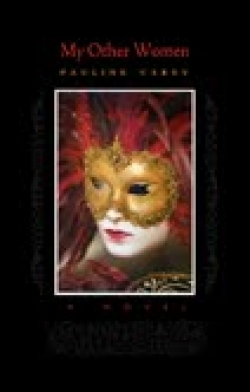My Other Women
A Novel
In the 1960s, Toronto is a city on the edge of a theatre-driven revolution. With boundary-breaking plays testing the limits of audience expectation, young actress Andrea Dermot steps into this burning new landscape determined to find a life for herself onstage. In her journey towards personal and artistic fulfillment, Andrea enjoys men and what they have to offer, but prefers to live life unattached, guided by her own principles of love and devotion. A driven drifter, she pursues acting with a dedicated passion, but finds herself melting into the arms of unavailable men. Her heated affairs with married men don’t, for the most part, weigh too heavily on her conscience; but after the end of each affair, she finds herself bound in friendship to the wives of her lovers and through them experiences a complexity of love and devotion she did not expect.
My Other Women is an ode to every artist in pursuit of fulfillment. Thankfully, Carey’s construction of Andrea is not the typical celebratory ode to a rebellious woman who tears away from the constraints of societal expectations to emerge bright and victorious. Carey moves beyond this chimera of feigned depth and creates a character so real it’s as if Andrea were plucked off the streets of Toronto’s bustling arts community, laid across the pages of this novel, and carved open for inspection. This tempered presentation of a realistic character makes her struggles relatable. Andrea is talented, but she is not a diamond-in-the-rough awaiting discovery. She aspires to some sort of greatness, but like many artists she works at what she loves for a pittance while plundering through the daily mechanisms of a less fulfilling job that will keep her financially afloat. This refreshing look into the life of an “ordinary” artist is set alongside scenes of intense artistic devotion. Readers witness Andrea’s studious acts of creation as she stitches something whole out of the remnants of women’s lives.
Although the events of this novel are set against the backdrop of profound cultural change, with the details of setting playing an integral role in the development of plot and character, the heart of this story pulses on what is left unsaid. The silence left between lovers (why did you leave me?), between friends (do you know about your husband?), the silence that exists on stage (use your body, not words) and languishes in Andrea’s mind (do you know what you want?) is an infuriating and exhilarating aspect of the narrative. The world of theatre that Carey has so masterfully depicted reverberates quietly within the reader; a necessary silence between the reader and text makes for a space that allows us to imagine ourselves as the artist, to look inward to see what one needs to be satisfied, or at least to move on.
This novel serves as an incredibly valuable study of the artist at work while pricking beneath the surface of deeply held convictions regarding love and marriage.
Reviewed by
Shoilee Khan
Disclosure: This article is not an endorsement, but a review. The publisher of this book provided free copies of the book and paid a small fee to have their book reviewed by a professional reviewer. Foreword Reviews and Clarion Reviews make no guarantee that the publisher will receive a positive review. Foreword Magazine, Inc. is disclosing this in accordance with the Federal Trade Commission’s 16 CFR, Part 255.

